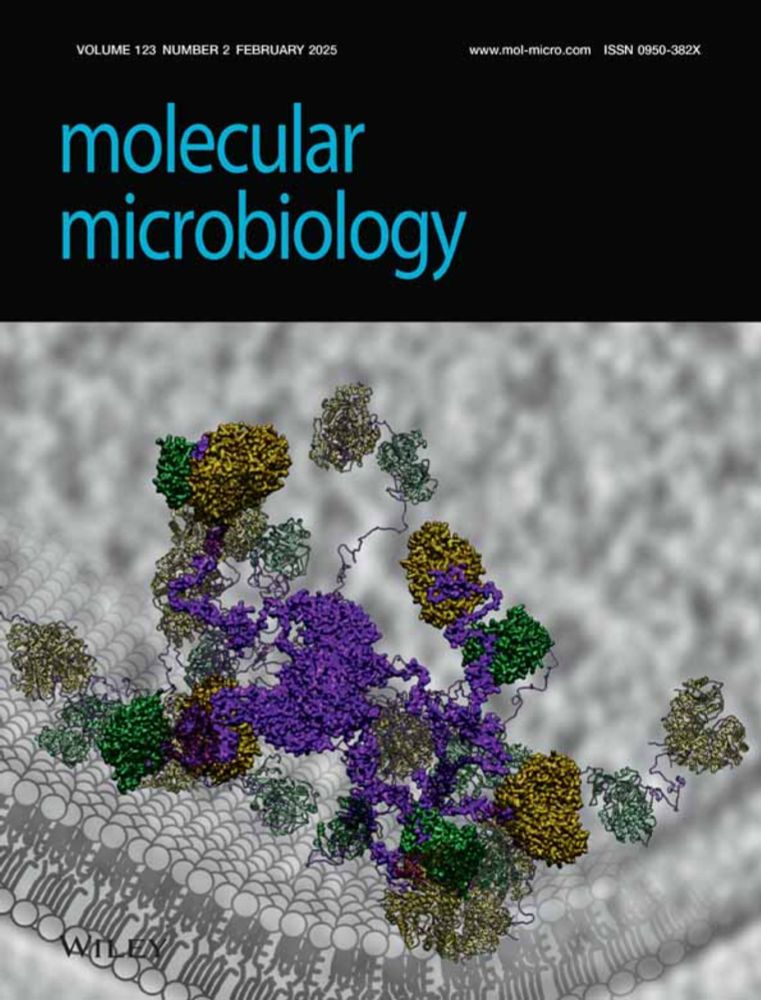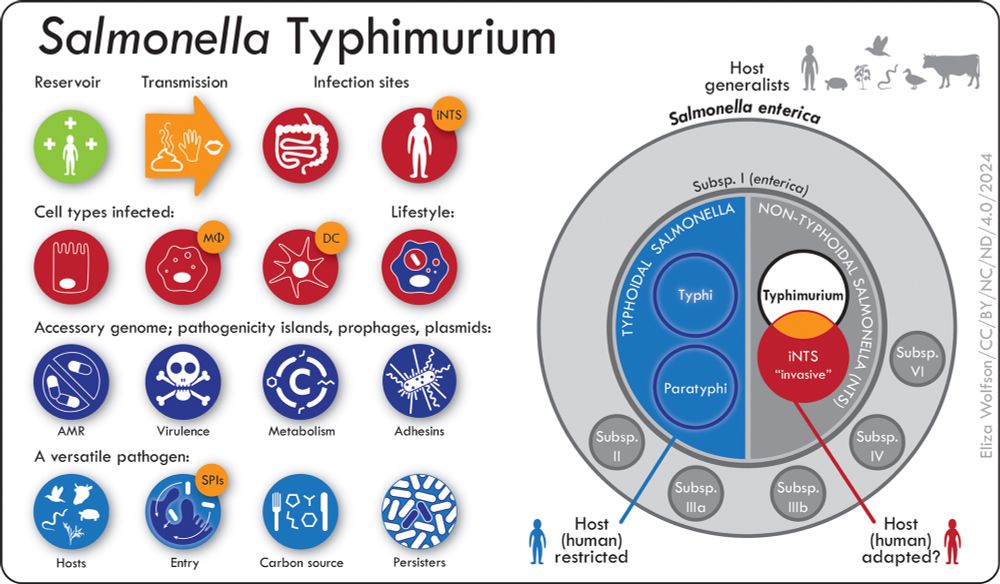Congratulations, Jay! Looking forward to learning about your discoveries :)
31.10.2025 08:09 — 👍 0 🔁 0 💬 0 📌 0
An Rhs effector uses distinct target cell functions to intoxicate bacterial and fungal competitors https://www.biorxiv.org/content/10.1101/2025.10.28.685041v1
29.10.2025 02:18 — 👍 2 🔁 2 💬 0 📌 0
Independent research fellowships leading to tenured positions at the John Innes Centre.
Repost = nice. Thank you very much!!!
03.10.2025 16:06 — 👍 49 🔁 87 💬 0 📌 4
Cool!
29.09.2025 23:10 — 👍 0 🔁 0 💬 0 📌 0
Congrats, Lev!
07.06.2025 19:35 — 👍 1 🔁 0 💬 1 📌 0
They will survive much better if you let them grow into stationary phase in rich media first, and then transfer them to a minimal medium with no carbon source. Transferring to carbon starvation directly from exponential growth causes faster death. See for example PMID: 32500952 and PMID: 34058747.
23.04.2025 20:41 — 👍 2 🔁 0 💬 0 📌 0
yes, the MMBs studied by george schaible and roland hatzenpichler are fascinating 𝗼𝗯𝗹𝗶𝗴𝗮𝘁𝗲 𝗺𝘂𝗹𝘁𝗶𝗰𝗲𝗹𝗹𝘂𝗹𝗮𝗿 bacteria 🤩
STC had mentioned them first in 2007 > schaechter.asmblog.org/schaechter/2...
and recently in > schaechter.asmblog.org/schaechter/2...
#MicroSky
09.04.2025 13:04 — 👍 15 🔁 6 💬 1 📌 1

Future Directions of the Prokaryotic Chromosome Field
In September 2023, the Biology and Physics of Prokaryotic Chromosomes meeting ran at the Lorentz Center in Leiden, The Netherlands. As part of the workshop, those in attendance developed a series of ....
In @molecularmicro.bsky.social: two special issues on Prokaryotic Chromosome Organization. Many excellent contributions, including a vision article: 'Future directions of the Prokaryotic Chromosome Field', outcome of BioPhyChrom 2023 @biophychrom.bsky.social onlinelibrary.wiley.com/doi/10.1111/...
20.02.2025 20:14 — 👍 32 🔁 25 💬 2 📌 2

The taxonomy & lifestyle of Salmonella Typhimurium
www.microbiologyresearch.org/content/jour...
23.01.2025 22:56 — 👍 23 🔁 9 💬 0 📌 0

Congrats to Findlay and many thanks to examiners Dan Neill and Martin Welch for their work on a successful viva today! Findlay has worked so hard and accomplished so much while blazing the trail as the first PhD student in the lab :)
16.01.2025 17:22 — 👍 2 🔁 0 💬 0 📌 0
Together with @frimanscience.bsky.social and our Chinese colleagues, we have worked out how to predict
(i) siderophore molecular structures
www.biorxiv.org/content/10.1...
and
(ii) siderophore interaction networks in communities
www.biorxiv.org/content/10.1...
from sequence data!
09.11.2023 12:13 — 👍 25 🔁 18 💬 2 📌 1
Thanks for the introduction!
08.11.2023 23:27 — 👍 1 🔁 0 💬 0 📌 0
Join a bleeding-heart liberal and compulsive speculator rambling about saving the world with win-win games at nonzerosum.games!
Postdoc at VanderbiltU, previously at JNCASR | Circadian Clocks & Evolution | Insects & Bacteria | Science communication | First-gen scientist | Views my own
Decoding immune responses to S. mansoni in the MacDonald lab 🪱🔬📊
A global public-private partnership led by Boston University to fund and support R&D early development of products to combat #antibioticresistance #CARBX
🔗 Visit our website: https://www.carb-x.org
The Carpentries: Software Carpentry, Data Carpentry and Library Carpentry. An open global community teaching the skills and perspectives to turn data into knowledge
Wadsworth Center|NYS Department of Health
Biomedical Sciences|UAlbany
Founding member of the PacLab (est. 2019)
Using structural biology (@fromme-lab.bsky.social alum) & genomics to decode bacterial chatter (@princetonmolbio.bsky.social Bassler Boys 2.0)
NIH F32 PostDoc with Andrea Soranno (WashU)
| 🧬 DNA | 🥁 Drums @ http://sewingneedle.bandcamp.com | 🐶 Dogs | https://drakejensen.owlstown.net/
Researcher in the life sciences. Expertise in systems biology, biophysics, applied math.
PI at University of Dundee, UK.
Love my kids, C elegans, microbes and Art.
We study olfaction during development and disease (PD, anosmia) and odours produced by microbiome of animals.
Assistant Professor at Cornell studying translation in bacteria. Nothing bad ever happens to a scientist, it's all data.
・Postdoc working on weirdo microalgae
・Bigger than any known bacterium
・Views represent trillions of little cells
・🌐 https://ltsyp.in
・🌈🦠🔬🌱🌏
Associate Professor 🧑🔬🧑🏫 at McGill University 🇨🇦 CRC in Spatial organization of living systems 💧🦠🪱🔬
https://weberlab.ca/
Algae enthusiast, Associate Professor @UniofExeter, joint appointment @thembauk
Algal ecophysiology | signalling | microbiome | molecular microbiology | diatoms!
Principal Investigator, Sir Henry Dale Fellow, new mom. My lab studies #Cryptosporidium biochemistry and drug discovery at the University of Dundee. She/Her
501(c) 3 volunteer based nonprofit dedicated to improving health care by building accurate, accessible, and enduring diagnostic services in resource-limited areas through reliable systems, training, and quality assurance. www.pathologistsoverseas.com
Lab Manager and Research Associate at Carnegie Mellon University
PI - Team @SapkotaLab @ MRC PPU, Professor @ University of Dundee.
AMR Antimicrobial Resistance
Fernanda C. Petersen,
Professor, University of Oslo and
Ulf R. Dahle,
Specialist Director,
Norwegian Institute of Public Health




